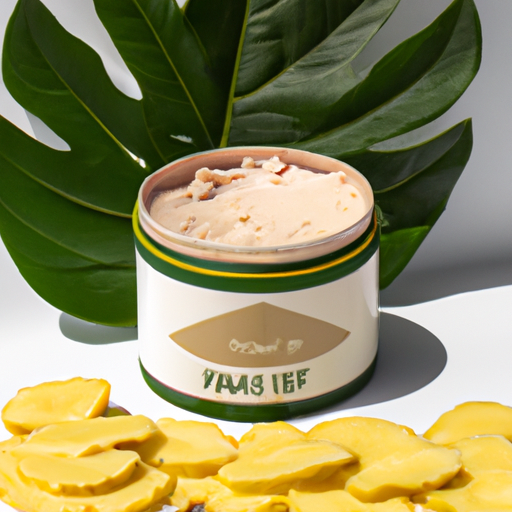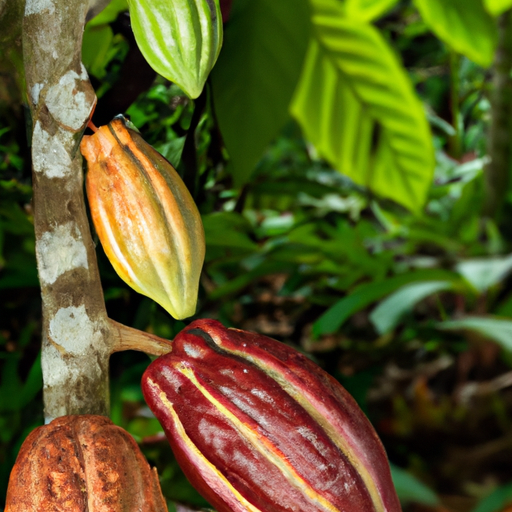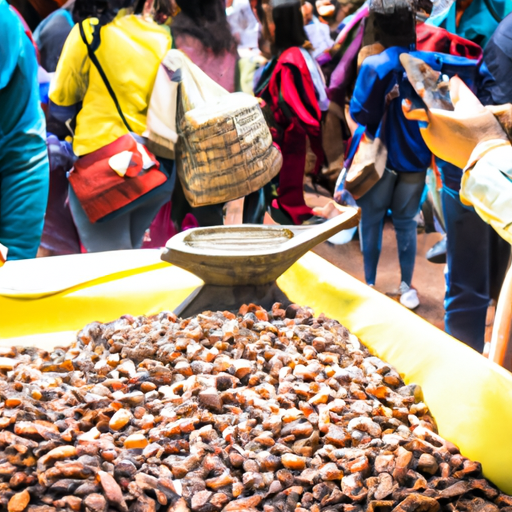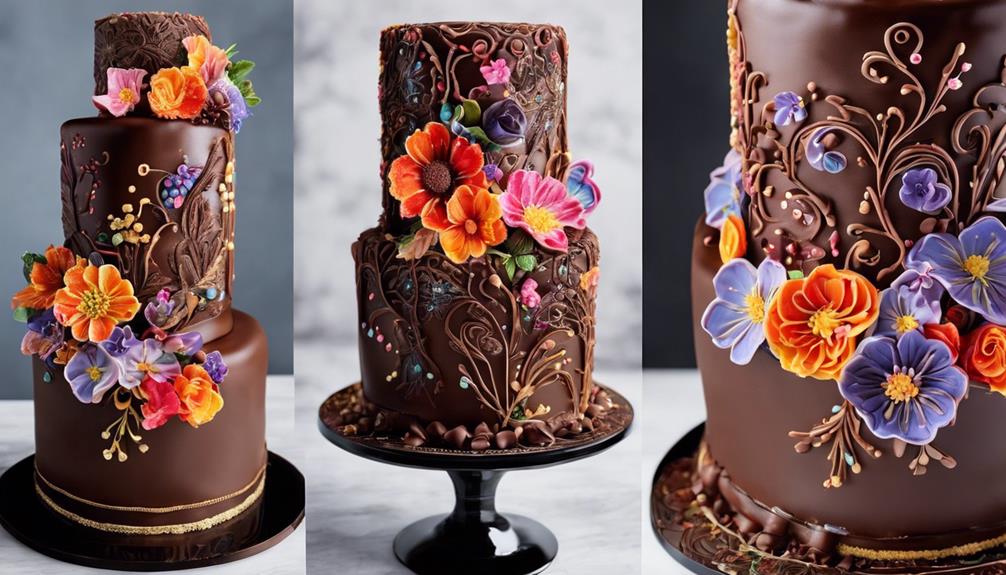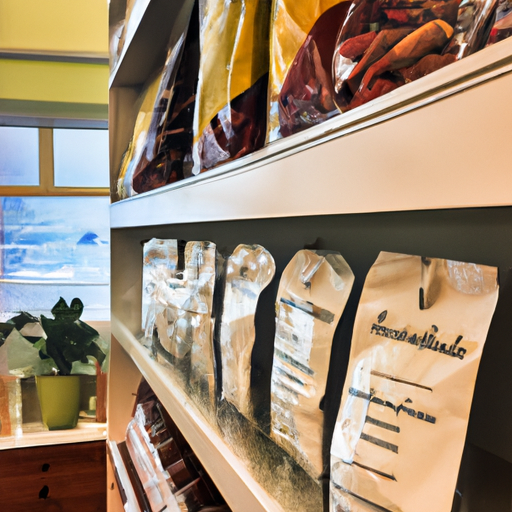Have you ever thought about the shelf life of raw cacao butter? Let me tell you, it’s like a decadent magical potion that can take your taste buds on a journey to a world of chocolatey bliss. Being a chocolate lover myself, I’ve always been intrigued by how long this heavenly ingredient can last.
In this article, we’ll delve into the ins and outs of raw cacao butter and uncover the secrets behind its longevity. We’ll explore the factors that affect its shelf life, such as temperature, humidity, and exposure to light and air.
Additionally, we’ll discuss the importance of safety considerations and how they can impact the quality and flavor of this delectable treat. So, join me on this journey as we unravel the mysteries of raw cacao butter and discover just how long it can truly last.
Key Takeaways
- Raw cacao butter has a shelf life of up to two years when stored properly.
- Factors that affect its shelf life include temperature, humidity, exposure to light and air, and the quality of the butter.
- Storing raw cacao butter in a cool, dry, and dark place helps maintain its freshness and extend its shelf life.
- Using antioxidants preserves the flavor, aroma, and nutritional value of raw cacao butter.
What is Raw Cacao Butter?
You may be wondering what exactly raw cacao butter is. Well, it is the fat extracted from the cacao bean, which is the main ingredient in chocolate.
Raw cacao butter is known for its numerous benefits, both for consumption and skincare. It is rich in antioxidants, vitamins, and minerals, making it a great addition to your diet.
In skincare, raw cacao butter is often used as a moisturizer, helping to hydrate and nourish the skin. It can also be used in homemade skincare products such as lip balms and body butters.
Understanding shelf life and expiration dates is important when using raw cacao butter. Knowing how long it lasts can help ensure its freshness and effectiveness in both culinary and skincare applications.
Understanding Shelf Life and Expiration Dates
Contrary to popular belief, raw cacao butter has an impressive shelf life of up to two years. Proper handling and storage play a crucial role in maintaining its shelf stability.
The key is to keep raw cacao butter in a cool, dry place away from direct sunlight and moisture. It is also important to seal it tightly in an airtight container to prevent exposure to air, which can lead to oxidation and rancidity.
When handled correctly, raw cacao butter can retain its quality and freshness for an extended period. However, various factors can affect its shelf life, including temperature fluctuations, exposure to light and air, and the quality of the raw cacao butter itself.
Understanding these factors is essential for maximizing the longevity of raw cacao butter.
Factors Affecting the Shelf Life of Raw Cacao Butter
Surprisingly, several factors can impact how well raw cacao butter holds up over time. Proper storage techniques play a crucial role in extending its shelf life. Here are five factors to consider:
- Temperature: Storing raw cacao butter in a cool, dry place is essential to prevent it from melting or becoming rancid.
- Humidity: Excessive moisture can cause the butter to develop mold or spoil faster, so it’s crucial to keep it in a dry environment.
- Exposure to light: Direct sunlight can degrade the quality of raw cacao butter, so it’s best to store it in an opaque container.
- Air exposure: Oxygen can lead to oxidation, resulting in a shorter shelf life. Ensure the container is airtight to minimize air exposure.
- Contamination: Avoid cross-contamination by using clean utensils and containers when handling raw cacao butter.
By understanding these factors and following proper storage techniques, you can prolong the shelf life of raw cacao butter. Now, let’s delve into the impact of temperature and humidity on its longevity.
a. Temperature and Humidity
Proper storage techniques, including controlling temperature and humidity, are crucial in maintaining the quality of raw cacao butter.
Studies have shown that inadequate storage conditions can significantly impact its freshness and flavor.
Temperature control is key, as cacao butter can easily melt if exposed to high temperatures, which can lead to the growth of bacteria and mold. It is recommended to store raw cacao butter in a cool, dry place, ideally below 70°F (21°C).
Additionally, moisture content should be kept low to prevent the butter from becoming rancid or developing an off taste. Excessive humidity can cause the butter to absorb moisture and become clumpy.
Transitioning to the next section, exposure to light and air also play a critical role in maintaining the quality of raw cacao butter.
b. Exposure to Light and Air
To keep your cacao butter in top-notch condition, make sure you shield it from light and air.
Exposure to light and air can have detrimental effects on the quality and shelf life of raw cacao butter. When cacao butter is exposed to light, it can undergo oxidation, which leads to a loss of flavor and aroma. Additionally, exposure to air can cause the butter to become rancid more quickly.
To preserve the freshness of cacao butter, store it in a dark, airtight container. This will help minimize light and air exposure, thus prolonging its shelf life.
Now, let’s move on to the next section about contamination and how to prevent it.
c. Contamination
After discussing the potential harm caused by exposure to light and air, it is crucial to address another factor that can negatively impact the shelf life of raw cacao butter: contamination.
Proper storage practices play a vital role in preventing contamination and ensuring the longevity of this precious ingredient. To maintain its quality, it is essential to store raw cacao butter in a cool, dry, and dark place, away from direct sunlight and heat sources. Additionally, it is advisable to keep it in an airtight container to minimize the risk of exposure to air and moisture.
By following these best storage practices, you can extend the lifespan of your raw cacao butter and enjoy its rich flavors and benefits for a longer period.
Transitioning into the subsequent section about proper storage techniques, let’s explore the steps you can take to ensure the optimal conditions for storing raw cacao butter.
Proper Storage Techniques
For the best results, you’ll want to make sure you store your precious cacao butter in a cool, dry, and dark place. Proper storage techniques are crucial in preserving the freshness and extending the shelf life of raw cacao butter. Here are some storage tips to keep in mind:
| Temperature | Environment |
|---|---|
| Cool | Dry |
| Around 60°F | Low humidity |
By storing your cacao butter in a cool environment, ideally around 60°F, you can prevent it from melting or becoming too soft. Additionally, keeping it in a dry place with low humidity helps prevent moisture absorption, which can lead to mold or spoilage. These conditions help retain the butter’s quality and prevent any contamination.
To learn more about the impact of temperature and environment on cacao butter storage, continue reading the next section about ‘a. temperature and environment.’
a. Temperature and Environment
When storing your precious cacao butter, it’s important to create a cool and dry environment. Temperature control is crucial for preserving the integrity of cacao butter. Ideally, it should be stored at a temperature between 60 and 70 degrees Fahrenheit (15-21 degrees Celsius). Avoid exposing it to extreme heat or cold, as this can cause the butter to melt or solidify unevenly, affecting its texture and taste.
In addition to temperature, it’s important to keep the environment dry. Moisture can lead to spoilage and the growth of mold. To prevent this, store the cacao butter in an airtight container and place it in a cool pantry or cupboard away from direct sunlight and moisture sources.
Proper storage techniques like these will help maintain the freshness and quality of your cacao butter. Now, let’s move on to the next section about ‘b. packaging and sealing’ to further ensure its longevity.
b. Packaging and Sealing
To ensure the freshness and quality of your cacao butter, it’s important to properly package and seal it. This creates a protective barrier against moisture and contaminants. When choosing packaging options, opt for airtight containers that can effectively block out air and prevent oxidation. Glass jars with tight-fitting lids or vacuum-sealed bags are excellent choices. These materials help maintain the integrity of the cacao butter and extend its shelf life.
Additionally, make sure to seal the packaging tightly to prevent any air or moisture from entering. This will help preserve the natural flavor and aroma of the cacao butter for a longer period. Proper packaging and sealing are crucial steps in ensuring the longevity of your raw cacao butter.
Moving on to the next section about avoiding cross-contamination, it’s important to take additional precautions to maintain its quality.
c. Avoiding Cross-Contamination
Now that we’ve discussed the importance of proper packaging and sealing, let’s move on to another critical aspect of preserving the freshness of raw cacao butter: avoiding cross-contamination. This step is crucial in preventing spoilage and maintaining the quality of the butter. To help you visualize this process, imagine the following:
-
Separate storage containers: Use separate containers for different types of cacao butter to prevent flavors from mixing.
-
Dedicated utensils: Have designated utensils for handling raw cacao butter to avoid transferring any contaminants.
-
Clean work surfaces: Ensure that your work area is clean and free from any potential sources of contamination.
By following these practices, you can reduce the risk of spoilage and maintain the integrity of your raw cacao butter. Now, let’s move on to the next section where we’ll explore the signs of spoilage.
Signs of Spoilage
Be vigilant for any signs that your precious cacao butter may have gone bad, as nothing is more disheartening than discovering spoiled goods. The causes of cacao butter spoilage can vary, but the most common ones include exposure to air, moisture, heat, and light.
To prevent spoilage, it is crucial to store your raw cacao butter properly. Keep it in an airtight container, away from direct sunlight, at a cool temperature below 75°F (24°C). Additionally, avoid introducing water or any other liquid into the container as it can lead to mold growth.
If you notice any off smells, discoloration, or a rancid taste, it’s a clear indication that your cacao butter has spoiled.
Now let’s explore the subsequent section about changes in texture and appearance.
a. Texture and Appearance Changes
Keep an eye out for any changes in the texture and appearance of your cacao butter. It’s like witnessing a magical transformation!
As cacao butter ages, its texture may change, becoming grainy or developing a chalky appearance. These texture changes can occur due to the separation of cocoa solids and fat within the butter.
Additionally, you may notice variations in its melting point, with older cacao butter melting at a lower temperature. These variations can affect the overall quality and performance of the butter in your recipes.
Now, let’s move on to another important aspect of determining if your cacao butter has spoiled – smell and taste differences.
b. Smell and Taste Differences
If you’re worried about the smell and taste of your cacao butter, rest assured that any differences in these areas can be indicators of spoilage. To help you understand the importance of smell and taste preservation, here are four key factors to consider:
-
Fresh aroma: Properly stored cacao butter should have a pleasant, chocolatey aroma. If you notice any rancid or off-putting smells, it’s best to discard it.
-
Rich chocolate flavor: High-quality cacao butter should have a rich, intense chocolate taste. If the taste is bland or has a sour note, it may have gone bad.
-
Absence of bitterness: Cacao butter should have a slight bitterness that complements its sweetness. Excessive bitterness could indicate spoilage.
-
Consistency in taste: Consistency is key when it comes to taste. If you notice any drastic changes in the flavor profile, it’s a sign that your cacao butter may no longer be fresh.
Understanding the importance of smell and taste preservation can help you ensure the quality of your cacao butter. To further extend its shelf life without compromising its quality, let’s explore ways to store and handle it properly.
Extending the Shelf Life
To prolong the freshness of your cacao butter, it’s crucial to store it correctly and handle it with care. There are several preservation techniques that can help extend its shelf life.
First, make sure to store your cacao butter in an airtight container to prevent exposure to air and moisture. This will help maintain its quality and prevent oxidation.
It’s also important to keep it in a cool, dark place away from direct sunlight and heat sources. Additionally, avoiding any contact with water or moisture will prevent the growth of bacteria and mold.
By following these preservation techniques, you can ensure that your cacao butter stays fresh and usable for a longer period of time.
Now, let’s move on to the next section about refrigeration and freezing, which is another effective way to extend its shelf life.
a. Refrigeration and Freezing
Refrigerating or freezing your cacao butter can significantly prolong its freshness and extend its shelf life. Here are some benefits of refrigerating cacao butter:
-
Maintains its quality: Refrigeration helps preserve the flavor, texture, and aroma of cacao butter, ensuring it stays as fresh as possible.
-
Protects against oxidation: Cold temperatures slow down the oxidation process, preventing the cacao butter from going rancid.
-
Reduces the risk of melting: If your cacao butter tends to melt easily in your kitchen, refrigeration can help keep it solid and easier to use.
-
Convenient storage: Refrigerating cacao butter is a simple and effective way to keep it organized and easily accessible.
However, freezing cacao butter has some drawbacks. Freezing can alter the texture and affect the overall quality of the butter. It may become grainy or develop ice crystals, which can impact its taste and texture.
Moving on to the next section about vacuum sealing, another method to extend the shelf life of cacao butter without these drawbacks.
b. Vacuum Sealing
Using a vacuum sealer can be a game-changer when it comes to preserving the freshness and quality of your cacao butter. Vacuum sealing benefits include keeping the butter free from moisture, air, and other contaminants that can cause it to degrade. By removing the air from the packaging, vacuum sealing helps to prevent oxidation and maintains the natural flavors and nutrients of the cacao butter.
This method is especially useful for prolonging the shelf life of raw cacao butter, as it can extend its freshness for up to two years when stored properly. While there are alternative storage methods like refrigeration and freezing, vacuum sealing provides a more effective solution for maintaining the quality and taste of your cacao butter.
Transitioning into the subsequent section about ‘c. using antioxidants,’ another way to enhance the longevity of your cacao butter is by harnessing the power of antioxidants.
c. Using Antioxidants
Harnessing the power of antioxidants can significantly enhance the preservation and quality of your cacao butter.
Using antioxidants in raw cacao butter provides numerous benefits. Antioxidants help to prevent oxidation, which can lead to rancidity and a decrease in the quality of the butter. By neutralizing free radicals, antioxidants preserve the flavor, aroma, and nutritional value of the cacao butter.
They also extend the shelf life by inhibiting the growth of bacteria and fungi. Some antioxidants commonly used in cacao butter include vitamin E and rosemary extract. These natural compounds not only enhance the longevity of your butter but also contribute to its overall health benefits.
Incorporating antioxidants in your cacao butter is a simple yet effective way to ensure its freshness and quality over time.
Moving on to using expired raw cacao butter…
Using Expired Raw Cacao Butter
Using expired cacao butter can lead to a range of problems, from off flavors and textures to potential health risks. Here are three reasons why repurposing expired cacao butter is not a good idea:
-
Rancidity: Expired cacao butter can become rancid due to the oxidation of its fats, resulting in an unpleasant taste and aroma.
-
Microbial growth: Over time, expired cacao butter can become a breeding ground for harmful bacteria and mold, posing a risk to your health.
-
Nutrient degradation: Cacao butter naturally contains antioxidants and other beneficial compounds, but these can degrade over time, reducing their potential benefits.
When it comes to using expired cacao butter, safety considerations should be a top priority.
a. Safety Considerations
Using expired raw cacao butter may seem tempting, but it is important to consider safety precautions. Consuming expired cacao butter can lead to foodborne illnesses such as stomachaches, diarrhea, and vomiting. As a responsible consumer, it is crucial to prioritize our health and well-being.
Raw cacao butter is known for its rich antioxidant content, which offers numerous health benefits, including improved heart health and enhanced cognitive function. However, these benefits can only be realized when consuming fresh, unexpired cacao butter. So, it is best to check the expiration date before using it in your recipes or as a skincare ingredient.
Now, let’s move on to the next section where we will explore the quality and flavor changes that occur in raw cacao butter over time.
b. Quality and Flavor Changes
Expired raw cacao butter undergoes significant changes in quality and flavor. To ensure the best flavor preservation, it is crucial to store raw cacao butter properly. Here are some storage techniques to help you enjoy the full potential of your cacao butter:
-
Keep it in an airtight container: This will prevent any moisture or air from altering its flavor.
-
Store it in a cool, dark place: Direct sunlight and heat can cause the butter to melt and lose its quality.
-
Avoid storing it near strong-smelling foods: Cacao butter easily absorbs odors, which can affect its flavor.
-
Use it within a year: While it can last longer, its flavor may deteriorate over time.
Now that you know how to preserve the flavor, let’s explore some exciting recipes and ideas for using raw cacao butter.
Recipes and Ideas for Using Raw Cacao Butter
Now that we’ve discussed the quality and flavor changes of raw cacao butter over time, let’s explore some exciting recipes and ideas for incorporating this delicious ingredient into your cooking.
Raw cacao butter is incredibly versatile and can be used in both sweet and savory dishes. From homemade chocolates and truffles to smoothies and baked goods, the possibilities are endless.
Not only does raw cacao butter add a rich and velvety texture to your creations, but it also offers numerous health benefits. It is packed with antioxidants, healthy fats, and minerals like magnesium and iron. By using raw cacao butter in your recipes, you can indulge in decadent treats while nourishing your body at the same time.
Now, let’s move on to the final thoughts and recap of what we’ve learned about raw cacao butter.
Final Thoughts and Recap
To truly appreciate the versatility and health benefits of raw cacao butter, incorporate it into your culinary creations and experience the indulgence and nourishment it effortlessly brings.
Raw cacao butter can be used in a variety of recipes, adding a rich and creamy texture to desserts, smoothies, and even savory dishes. Its high content of healthy fats, vitamins, and minerals makes it a valuable addition to any diet.
The benefits of cacao butter include its ability to boost mood and reduce stress, support heart health, and provide antioxidant protection. Additionally, cacao butter is a natural source of energy and can help improve brain function.
So whether you’re making homemade chocolate, whipping up a delicious cacao smoothie, or using it as a base for a flavorful sauce, raw cacao butter is a must-have ingredient for any kitchen.
Frequently Asked Questions
Can raw cacao butter be stored in the refrigerator?
Yes, raw cacao butter can be stored in the refrigerator for extended shelf life. It helps to prevent spoilage and maintain its freshness, ensuring that it lasts longer.
What are some signs that raw cacao butter has spoiled?
Some signs of rancid cacao butter include a strong, unpleasant odor and a sour or rancid taste. To properly store cacao butter, keep it in an airtight container in a cool, dark place.
Can raw cacao butter be used past its expiration date?
Raw cacao butter can be used past its expiration date for alternative purposes like making body moisturizers or lip balms. To extend its shelf life, store it in an airtight container in a cool, dark place.
How long can raw cacao butter be stored in the freezer?
Raw cacao butter can be stored in the freezer for up to one year, preserving its quality and freshness. For example, I stored a batch for six months and it maintained its rich aroma and smooth texture.
Are there any safety considerations when using expired raw cacao butter?
When using expired raw cacao butter, it’s important to take safety precautions. Expired cacao butter may lose its quality and could potentially cause foodborne illness. To ensure shelf life extension, always check for signs of spoilage before using.
Is Raw Cacao Butter as Long-Lasting as Raw Cacao?
Raw cacao butter has a similar raw cacao shelf life as raw cacao. Both products are known for their long-lasting nature, making them ideal for storing in your pantry. With proper storage, raw cacao butter can maintain its quality for an extended period, much like raw cacao.
Conclusion
In conclusion, the shelf life of raw cacao butter can be quite surprising. Despite its long-lasting reputation, this delightful ingredient doesn’t stick around forever. It’s like a magical disappearing act. Just when you think it will last forever, poof! It’s gone.
So, be sure to store it properly, away from light and air, and use it before it decides to vanish into thin air. But fear not, with proper storage and timely usage, you can enjoy the rich flavors and benefits of raw cacao butter for a decent amount of time.

